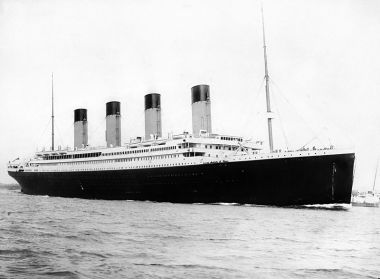
During April, as the world commemorated the 100th anniversary of the Titanic disaster, the stories of three courageous priests resurfaced. These remarkable accounts detail selfless acts of heroism and the offering of Christian ministry during the aftermath of the tragedy that struck on the night of April 14th, 1912.
Among the victims of the sinking were Father Juozas Montvila of Lithuania, Father Josef Peruschitz, O.S.B. of Bavaria, and English rector Father Thomas Byles, all of whom chose to stay behind and offer spiritual comfort to those facing their final moments.
Eyewitnesses recounted how passengers, particularly Catholics, sought the presence of priests in their hour of need. The three priests led prayers, administered sacraments, and provided solace as the Titanic met its fateful end, claiming the lives of 1,503 souls.
Father Byles and Father Peruschitz, who had celebrated Mass on the morning of the disaster, preached messages of spiritual preparedness, emphasising the need for the lifeboat offered by Jesus Christ.
Father Byles, a convert to Catholicism, was hailed as a martyr by Pope Pius X for his unwavering dedication to his faith and his fellow passengers. His legacy lives on in the hearts of those he comforted in their final moments.
Similarly, Father Peruschitz, on his way to serve as principal of a Benedictine high school in Minnesota, courageously stayed behind to minister to the souls aboard the ill-fated ship.
The eyewitness account, published in the Jesuit journal ‘America’, vividly captures the scene, attesting that “all the Catholics on board desired the assistance of priests with the greatest fervour” following the ship’s collision with the iceberg.
The priests “aroused those condemned to die to say acts of contrition and prepare themselves to meet the face of God” once called to glory. According to the eyewitness, they continuously engaged in giving general absolution to those about to perish.
Father Byles and Father Peruschitz, having offered Mass earlier that fateful Sunday morning, were described as preaching sermons on humanity’s need for “the spiritual lifeboat” offered by Jesus Christ amid the dangers of the world.
Father Byles, born in Yorkshire, England, during 1870, had been travelling to the U.S. for the wedding of his brother. After Father Byles’ death in the shipwreck, St. Pius X reportedly described him as “a martyr” who bravely died serving others during the tragedy. A plaque at his former parish commemorates his “heroic death in the disaster” and notes that he “earnestly devoted his last moments to providing religious consolation to his fellow passengers” by remaining on the stricken vessel.
Father Peruschitz, a Bavarian priest-monk born in 1871, was described by eyewitnesses as declining a place on the lifeboats, sacrificing himself to serve the spiritual needs of others.
His body, like those of the other two priests, was not recovered. A memorial at his onetime monastery in Bavaria reads: “May Joseph Peruschitz rest in peace, who on the ship Titanic piously sacrificed himself.”
The youngest of the three priests, Father Juozas Montvila, born in 1885, faced persecution for his ministry in Lithuania under the Russian Empire. Despite the risks, he continued to fulfil his calling until the end, offering solace and guidance to those around him.
Reports from the sinking ship recounted how the Byzantine-rite priest served his calling to the very end. Since then, there have been efforts towards his canonisation, a testament to the enduring impact of his bravery and compassion.
The SS Titanic struck an iceberg at 11:40 p.m. on April 14th, 1912, and sank soon afterwards in the early hours of April 15th. In the aftermath, only 705 people survived, leaving behind a tragic legacy deeply ingrained in our culture. The doomed liner had only 20 wooden lifeboats available, far too few to save all the passengers on board.